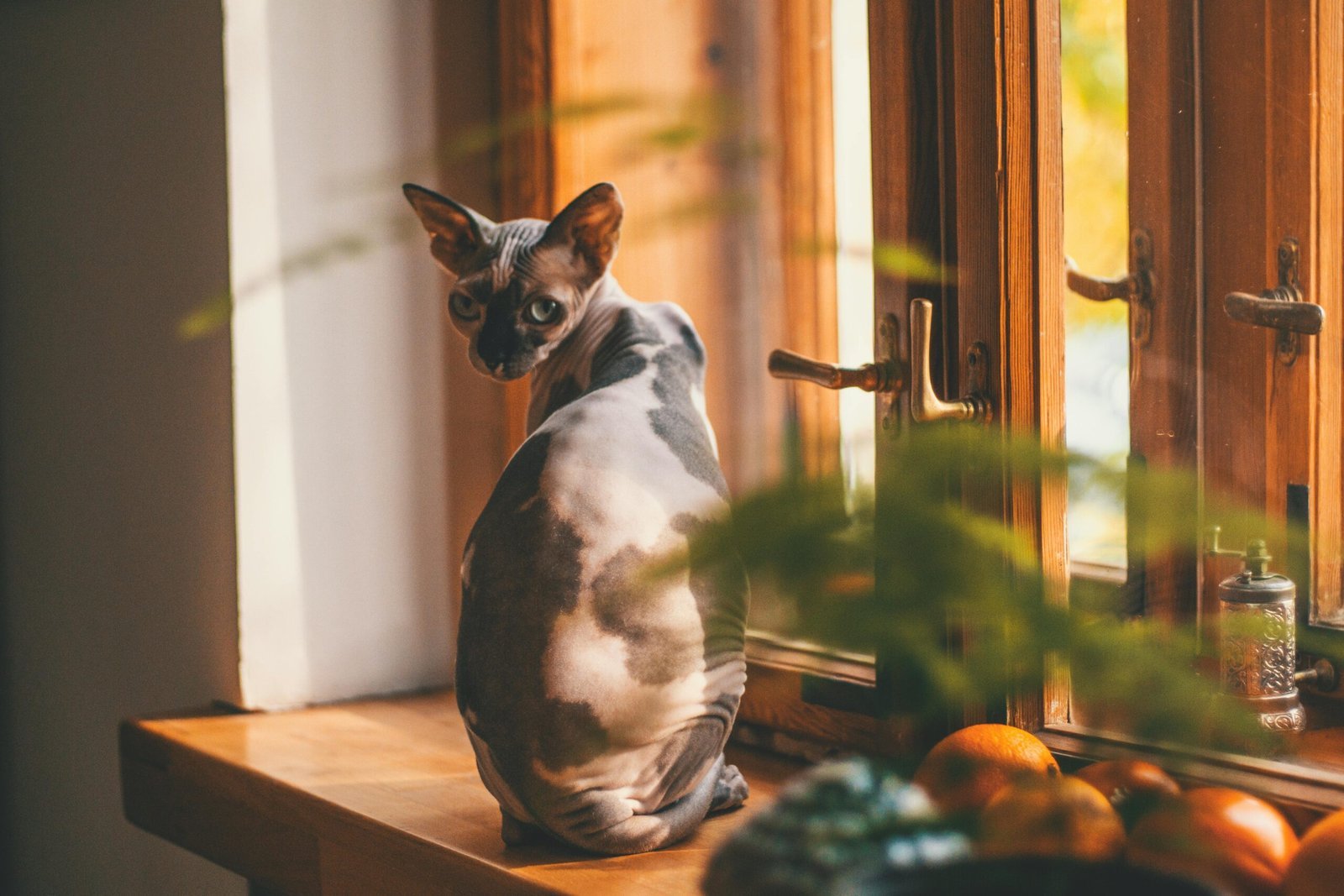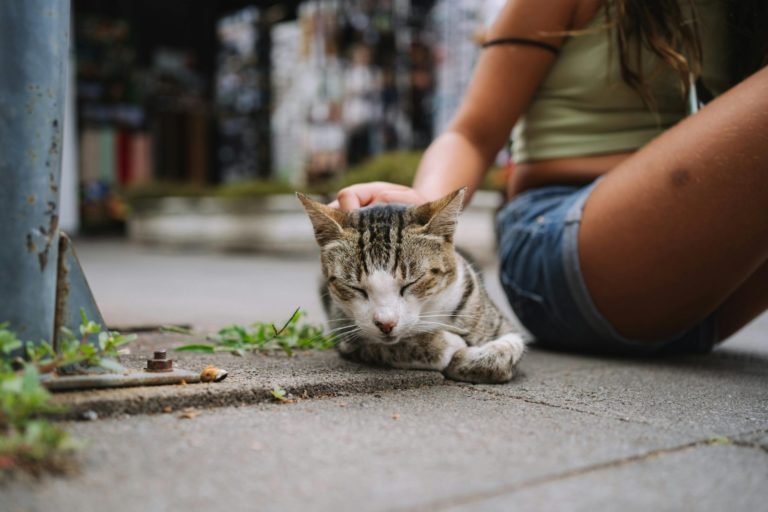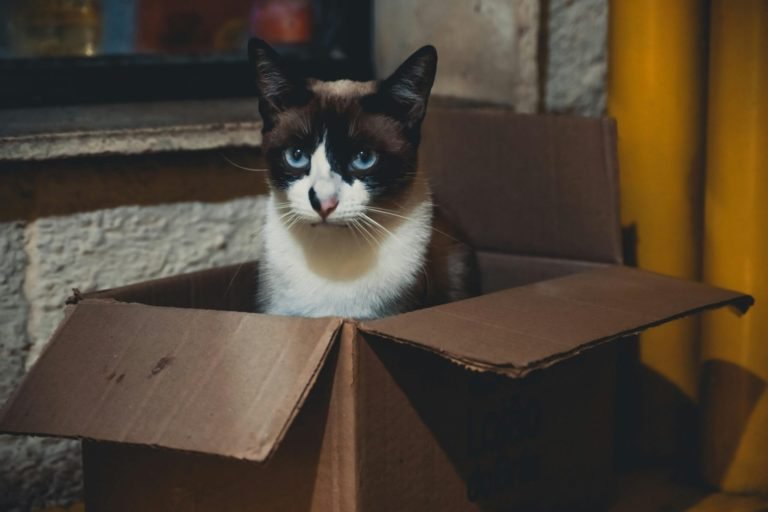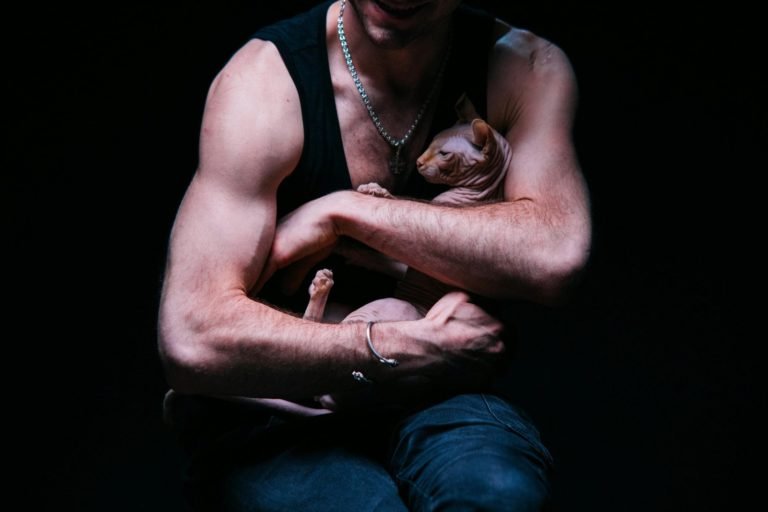
Congratulations on the good news, dear cat parent! We are sure you are over the moon with the news of your pregnant cat! And you must have already begun preparation to welcome the bundle of furry joy!
Whether planned or a surprise, caring for a cat pregnancy can be daunting. As a responsible cat parent, you should understand the journey ahead. When you are prepared, you can give the best prenatal care for your cat. And ensure a healthy litter.
Whether you are a seasoned pro or a first timer taking care of a pregnant cat, we all can do with a little more info. Here is our guide on taking care of pregnant cats.
Reproduction Basics of A Pregnant Cat
If you are a cat parent to a female kitty, then understanding the basics of cat reproduction is crucial. Female cats are also known as queens. And if your queen is pregnant, then it is more crucial that you know this background.
Female cats can reach sexual maturity between 4 months to 12 months of age. Smaller breeds tend to mature at a younger age than larger breeds. The quality of nutrition, sunlight exposure, and overall health will also influence the timeline of your cat’s sexual maturity.
For pet parents, it is vital to know these facts. Your cat might reach sexual maturity as young as 4 months of age. But, her body will not be physically prepared for the rigors of pregnancy and childbirth. Getting pregnant at this age could lead to serious complications.
Estrus or Heat Cycles of Your Cat
Cats have multiple heat cycles during specific seasons that last anywhere between 2 to 19 days. During the breeding season, these heat cycles happen once every 2 to 3 weeks unless the cat gets pregnant. Indoor cats might have heat cycles around the year due to exposure to artificial lighting.
Signs of Heat in Cats
When your cat is in heat, she will be restless and increase yowling. You might see the signs of increased affection from her. You might find your cat rolling on the floor and treading with its back legs. There will also be slight vaginal discharge. Some cats might ovulate without showing any signs of heat. This is the phenomenon of silent heat.
Induced Ovulation
Humans are spontaneous ovulators. Whereas, in cats the act of mating stimulates ovulation 24 to 36 hours after mating. The female cat can mate multiple times with different cats during her heat cycle. So, a single litter can have multiple fathers. If the ovulation does not happen after mating, the cat will again go into heat.
Gestation Period of a Pregnant Cat
A pregnant cat has a gestation period of 63 to 65 days from the day of mating. This period can go up to 72 days. If the kittens are born before the completion of 60 days, they are considered premature. As said above, a cat can have multiple matings during its heat cycle. This aspect makes it difficult to predict the due date for delivery accurately. Sometimes, cats can exhibit signs of pregnancy without being pregnant. This condition lasts for about a month and is called pseudo pregnancy.
Signs of a Pregnant Cat

Identifying the early signs of pregnancy in cats is challenging. Here are some signs that you can keep an eye on –
Physical Changes in a Pregnant Cat
When your cat becomes pregnant, she stops going into the subsequent heat cycles. When a cat becomes pregnant, she gains weight. This weight increase is very gradual, i.e., 1 to 2 kg by the end of the gestation period. The weight loss will be more noticeable in the final weeks, especially when her abdomen becomes rounded.
Around 3 weeks of pregnancy, the cat’s nipples become larger and gain a pink color. The pregnant cat may lose the hair around the nipples during pregnancy. A pregnant cat’s belly will start to look more rounded and feel firmer around 5 weeks into pregnancy. If you have a slimmer cat, you will be able to feel the kittens moving inside as the pregnancy advances.
Behavioral Changes in a Pregnant Cat
Pregnant cats become more attached to their human. They become clingy and want to hang out with their parent the whole day. They are more affectionate and also demand attention from their owners. Some cats might display the opposite behavior. They will become withdrawn and irritable.
Pregnant cats will sleep more, especially in the later stages of the pregnancy. They will prefer to hang out and take extended naps in warm, comfy spots.
Morning Sickness and Changes in Appetite of a Pregnant Cat
It is normal for pregnant cats to develop specific food references. Cats usually experience a decrease in appetite in the early stages of pregnancy. And their appetite increases during mid and late pregnancy. Some pregnant cats will start drinking more water.
Pregnant cats experience morning sickness during 3 to 4 weeks of pregnancy. A pregnant cat’s morning sickness will be similar to that of humans. You can expect nausea and occasional vomiting. Pregnant cats might have morning sickness from a few days to a week. Every pregnant cat has its own experience of morning sickness. For some, it might be severe, while others might not have it at all.
Nesting Behavior of a Pregnant Cat
Pregnant cats will display nesting behavior one to two weeks before her due date. The cat will begin to look for quiet and secluded spots. It will try to make the spot comfortable with clothing and blankets. You can notice restlessness, pacing, and vocalizing.
Confirming Pregnancy
It’s true; there are definite signs you can observe during the onset of a cat pregnancy. But, it is always better to confirm the pregnancy with the vet. This confirmation and the vet’s input help you provide better prenatal care.
The vet might examine the pregnant cat with the following methods for confirmation –
- Palpitations can help the vet feel the fetal bumps over the cat’s abdomen. An experienced vet can do this test at 3 to 4 weeks of gestation.
- Ultrasound can detect the fetal kitten’s heartbeat as early as the 16th day of the pregnancy. Your vet will usually perform the ultrasound around day 25.
- X-rays can also help to estimate the size of the litter in the later stages of cat pregnancy. However, they are usually avoided due to the risk of radiation exposure.
- When a pregnant cat reaches the 25 to 30-day mark, the relaxin hormone can be measured to confirm pregnancy.
Stages of a Cat Pregnancy
Here are the different stages a cat pregnancy –
- Week 1-2:Fertilization and implantation. No visible signs of pregnancy.
- Week 3: Kitten embryos begin to develop
- Week 4: Although not visible outside, the fetal movement begins inside
- Week 5-6: Enlarged abdomen and visible fetal movement in some cats
- Week 7-8: Noticeable weight gain and enlargement of mammary glands
- Week 9: Restlessness and decreased appetite as the pregnant cat prepares for labor.
Nutrition for a Pregnant Cat

The pregnant cats and the growing kittens both need the support of proper nutrition. Well-balanced and nourishing food is crucial to ensure proper fetal growth and prevent complications. Nutrition also supports the mother after birth as it helps with lactation.
Increased Calorie Intake for the Pregnant Cat
During the first trimester or the first 3 to 4 weeks, you need not make any changes to the feeding schedule. You should increase the calorie intake of the pregnant cats by 10% every week during weeks 4-6 of the pregnancy. In the final weeks of the pregnancy (last 3 weeks or the third trimester), the nutrition should increase by 25 to 30% of the regular levels.
It is a good idea to increase the portion sizes gradually and add meals.
Protein Requirements of a Pregnant Cat
Pregnant cats need to have a diet with 30 to 40 percent of protein to ensure fetal development. Animal-based proteins such as fish or chicken are ideal as they provide the complete amino acid profile. You might also supplement the food of the pregnant cats with taurine supplements. These amino acids are crucial for the development of the heart and eyes of the kittens.
Kitten Food Transition for the Pregnant Cat
During the late stages of the pregnancy, the pregnant cats will need additional nutrients. A switch to kitten food can help you provide this crucial need. Kitten foods have a higher level of proteins, vitamins, and minerals needed for fetal development. They are also more calorie-dense than homemade cat food.
The ideal time for making this switch is around five to six weeks of the pregnancy. You can begin by mixing small amounts of kitten food with the regular meals of your pregnant cats. You can slowly increase the amount of cat food over the next 7 to 10 days. This process will protect the cat against digestive upsets.
Feeding Frequency of the Pregnant Cat
In early pregnancy, you can maintain the typical meal schedule of 3 to 4 meals per day.
As the kittens grow, the space in the belly of the pregnant cat compresses. So, the pregnant cat can not eat large meals. During mid to late pregnancy, you increase the meal schedules to 4 to 6 times a day. You can make the meals smaller and offer meals more frequently.
Some cats also fare better with free feeding. You can let them access and eat dry food on their own. Then, supplement their diet with small quantities of wet food in meals.
Hydration Needs of the Pregnant Cat
It is normal for the pregnant cat to drink more water than usual. So you should ensure constant access to fresh and clean water. You can use water bowls or cat fountains for this purpose. Wet food is also an excellent way to ensure proper hydration for your pregnant cat.
Supplements Needs of a Pregnant Cat
Usually, high-quality cat food is enough to meet the nutrient needs of pregnant cats. Your vet can advise you regarding the additional supplements. Your cat might need calcium supplements during lactation along with omega-3 and folic acid supplements during pregnancy. But, you have to be very careful as overuse of vitamins and minerals can be harmful to pregnant cats and the kittens. Also, never use supplements designed for humans.
Monitoring the Weight Gain of Pregnant Cat
Obesity can create complications during pregnancy and birth. To protect your pregnant cat and little cat babies, ensure proper weight gain of 1 to 2 kgs. Doing weekly weigh-ins and keeping records will help you monitor the weight gain of the pregnant cat.
Foods to Avoid during Pregnancy
Certain foods can be harmful to your pregnant cat, and you should avoid them. Raw meat and fish can contain harmful bacteria and parasites. Fish like tuna contain high levels of mercury, which is harmful. Unpasteurized dairy can also cause upsets as it contains harmful bacteria.
Exercise and Activity Recommendations

It is natural for pregnant cats to laze around and become less active. However, gentle exercise can be beneficial for the pregnant cats. You can encourage gentle play throughout pregnancy. It helps to maintain the muscle tone of the pregnant cats and prevents excessive weight gain. Scratching posts and climbing structures help your pregnant cats to enjoy light activity. Don’t force your cat into becoming active. Avoid rough play to protect the pregnant cats from injuries and falls.
Veterinary Care
Regular veterinary will help your cat have a safe pregnancy and healthy litter. The first visit should be to confirm the pregnancy and to get an overall health assessment. Vets generally advise avoiding vaccinations during pregnancy. Your vet can also devise safe options for controlling parasites such as fleas, ticks, and worms.
A mid-pregnancy check around 5 weeks will help your vet monitor the progress and help you develop a birthing plan. A pre-birth check-up with the vet 1 to 2 weeks before the due date will help you update the birthing plan and get ready for the delivery.
Prepare Your Home for the Kittens
As the due date approaches, you can begin to make arrangements for welcoming the kittens. The first step is to create a comfortable nesting area where your cat can relax. Find a warm and secluded spot away from the usual noises of television or other cats or pets. This will be spot where she can have an undisturbed delivery and then take care of her litter. You can get a shallow box or basket, then line it with soft blankets and clean towels.
Make sure to have clean towels and a heating pad on the standby for the kittens. Keep the feeding bottles and kitten formula ready to support the mother after birth. You can use the kitten scale to monitor the newborn litter’s weight.
Remove any loose wires and small objects around the house to kitten proof it. Move the feeding bowls of the mother away from this nest. Let the mother cat get her meals and nutrition undisturbed. If you are a multi-pet household, it is a good idea to have a separate room ready for the mother and the new litter.
Supporting Your Pregnant Cat
If you are a new cat parent, caring for a pregnant cat can feel scary. But remember that it is a natural process, and with your support, your beloved cat will have a safe pregnancy. You can rely on your vet to help you make crucial decisions to ensure the well-being of your pregnant cat. So, don’t hesitate to ask for professional help if you have any doubts.
With your care, both you and your cat and enjoy the miracle of healthy kittens.
We wish you and your pregnant cat the best of luck on this adventure!




